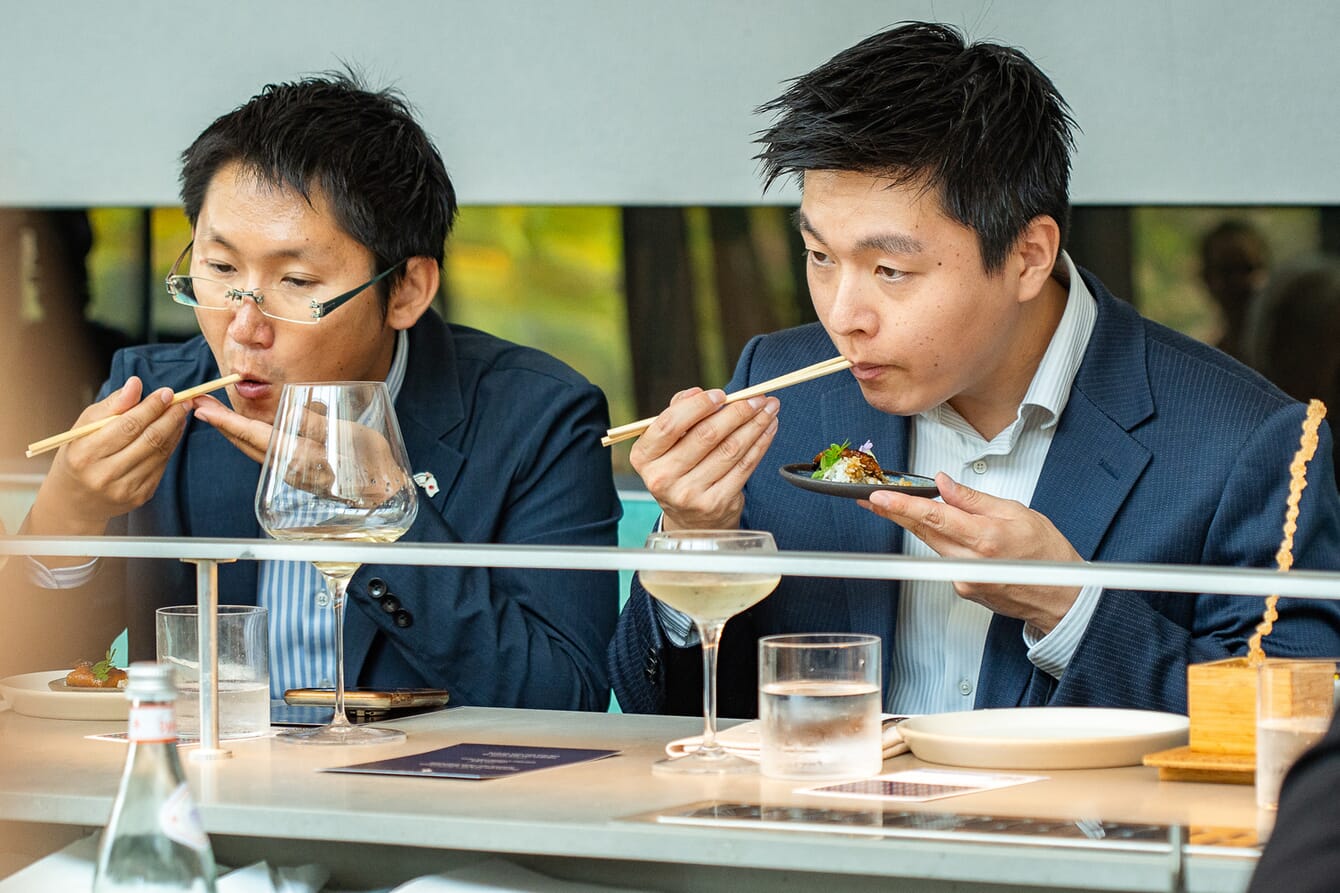
© Liran Maimon
Forsea developed its cultured iteration of eel in response to the dwindling populations of wild eels – which are a delicacy in Japan – and the subsequent skyrocketing prices. According to the Israeli startup, the cultivated eel meat will bridge the growing gaps in demand, particularly in Japan, which consumes almost half of the world’s freshwater eel supply.
In the online nationwide survey, conducted in January 2025 among 2,000 respondents evenly distributed by gender and age, results revealed an emerging awareness among Japanese consumers of cell-based products, with 35 percent of respondents affirming familiarity of some level with cultured seafood and a willingness to try cultured eel. A quarter of the respondents expressed eagerness to try it irrespective of price, while the rest set various limits on what they were willing to spend.
Eel enjoys iconic status in Japanese cuisine. Freshwater eel (Anguilla japonica), known as unagi, is traditionally grilled in a sweet soy-based glaze and served over rice.
Japan consumes 50 percent of the world’s eel supply, which is valued at up to $10 billion, demonstrating its enduring reverence there. However, in a previous survey conducted in August, 23 percent of those surveyed admitted that they “love eel” but refrain from purchasing it due to its steep price tag. Over a third expressed concerns over the ecological impact of overfishing of freshwater eel, which have rendered them an endangered species.
More than 50 percent noted that they consume eel at least once per year; 10 percent enjoy it regularly while others allow themselves to indulge on special occasions; while 50 percent of the respondents also expressed that they were willing to pay premium prices for a high-quality product.
A future for cultured seafood
The latest survey highlighted certain factors motivating interest in cultivated seafood: Nearly a third of the respondents cited health reasons, believing cell-based seafood to be highly nutritious safer option, given its absence of heavy metals, and contaminants. One in three were drawn to its sustainability attributes. Twenty-six percent were intrigued by the groundbreaking technology behind cultured food.
Almost 40 percent of the respondents agreed that cell-cultured seafood could potentially solve the problem of overfishing and support ocean conservation. Taste and price were cited as the key considerations of cultured seafood.
“The results of this survey were encouraging, as it indicates a readiness among Japanese consumers to explore innovative food options,” said Roee Nir, co-founder and CEO of Forsea, in a press release.
“Having scoured the market, we also discovered consumer types who are potential customers for our product, from the environmentally conscious young adult to the health-conscious homemaker, to the vegetarian-minded student or the tech-savvy businessperson seeking new experiences.”




